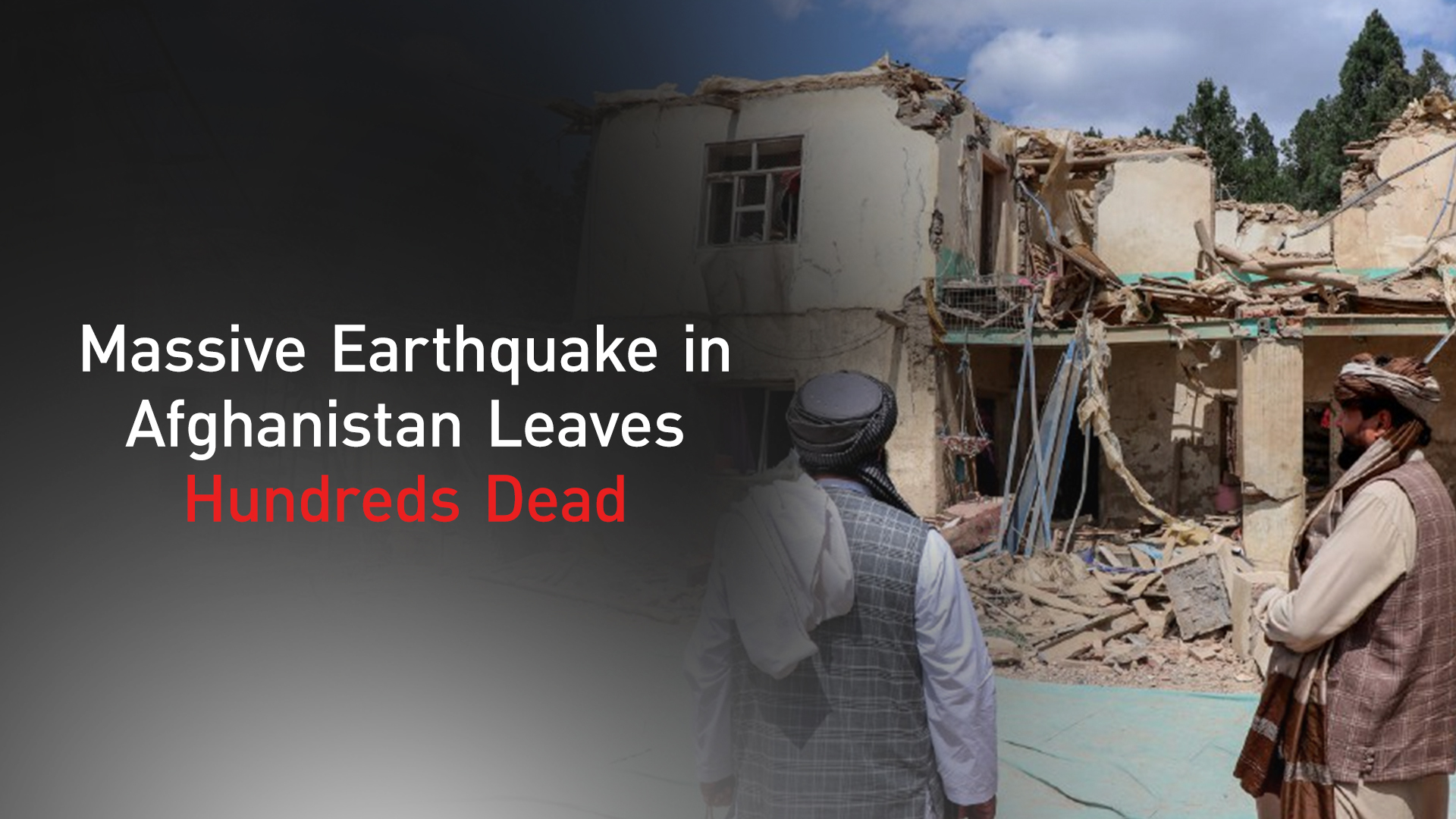Death Toll Surges Past 800 in Devastating Eastern Afghanistan Earthquake
A 6.0-magnitude earthquake in eastern Afghanistan has killed at least 800 people and injured over 2,500, according to the interior ministry. The quake caused widespread destruction in Kunar and Nangarhar provinces, compounding an existing humanitarian crisis.

ERBIL (Kurdistan24) – A powerful 6.0-magnitude earthquake has devastated eastern Afghanistan, killing at least 800 people and injuring more than 2,500 in a catastrophic event that leveled homes and triggered a massive humanitarian response, according to the nation’s interior ministry. The quake, which struck just before midnight on Sunday, has plunged the provinces of Kunar and Nangarhar into a state of emergency, compounding the suffering in a region already grappling with recent natural disasters and a protracted humanitarian crisis.
In a grim update provided to the news agency AFP on Monday, Afghan interior ministry spokesman Abdul Mateen Qani confirmed the staggering scale of the tragedy. "In the earthquake that struck just before midnight on Sunday, 610 people were killed and 1,300 were injured in Kunar province, with numerous houses destroyed," Qani stated.
He added that in the adjacent Nangarhar province, "12 people were killed and another 255 injured," bringing the total casualty count into the thousands. The confirmed death toll represents a dramatic escalation from initial figures, which had initially suggested a much smaller, though still significant, loss of life.
The earthquake’s epicenter was located 27 kilometers from the city of Jalalabad in Nangarhar province, according to the US Geological Survey, which recorded the seismic event at a relatively shallow depth of eight kilometers. Geologists widely note that shallow earthquakes tend to cause more extensive and severe damage at the surface compared to deeper tremors.
The powerful shaking was felt across a wide area, with residents from the Afghan capital, Kabul, to Pakistan’s capital, Islamabad—approximately 370 kilometers away—reporting that buildings trembled for several seconds, as documented by AFP journalists in the region.
Throughout the night, the initial quake was followed by a series of unsettling aftershocks that further terrified residents and hampered rescue efforts. Among them was a powerful and shallow 5.2-magnitude tremor that struck just after 4 a.m. local time, intensifying the fear and destruction in the affected communities.
As the sun rose on Monday, the full scope of the disaster began to emerge. Early reports from Nangarhar provincial government officials had placed the initial death toll at ten. A statement from the Nangarhar government said, "In Dara-i-Nur district, the death toll has reached nine, and the number of injured has reached 20."
This figure was later revised upward to ten by Fahimullah Dilawar, the head of the Nangarhar provincial hospital. Among the first confirmed victims were two children, who were tragically killed when the roof of their home caved in during the intense shaking. Photographs from AFP showed the heart-wrenching aftermath, with several injured children receiving urgent medical treatment at a nearby hospital.
This earthquake is the latest in a series of calamities to strike Afghanistan, a nation situated in a seismically active region. The country is frequently hit by earthquakes, particularly in the Hindu Kush mountain range, which lies near the volatile junction of the Eurasian and Indian tectonic plates.
The disaster in Nangarhar and Kunar comes just days after the same area was battered by severe flooding between Friday and Saturday, which killed five people and destroyed vital crops and property, according to provincial authorities.
The event evokes painful memories of other recent seismic disasters in the country. Last year, a series of powerful quakes jolted Afghanistan’s western Herat province, killing more than 1,500 people.
A joint assessment conducted by the United Nations, the European Union, and the Asian Development Bank found that the Herat earthquakes had damaged or completely destroyed over 63,000 homes, displacing countless families.
Afghanistan’s ability to respond to such large-scale disasters has been severely compromised by its broader circumstances. Ravaged by four decades of war, the nation is already contending with a severe humanitarian disaster.
The situation has been exacerbated by the dramatic shrinkage of foreign aid following the return of the Taliban to power, undermining the impoverished nation’s capacity to mount effective emergency and recovery operations.
The region has a long history of devastating earthquakes. In 2015, a powerful 7.5-magnitude quake ripped across both Pakistan and Afghanistan, killing more than 380 people, with the majority of the deaths occurring in Pakistan.
In one particularly tragic incident during that disaster, 12 young Afghan schoolgirls were crushed to death in a stampede as they desperately tried to flee their shaking school building, a stark reminder of the unique vulnerabilities faced by the population in such events.
